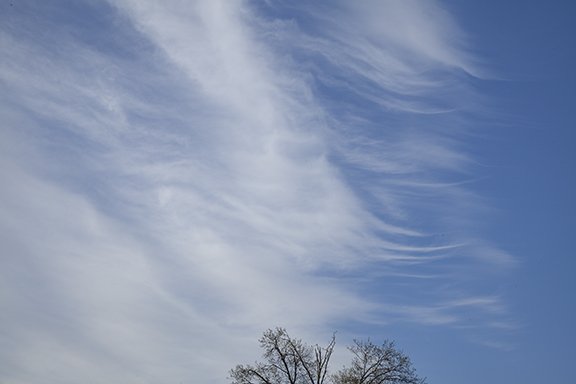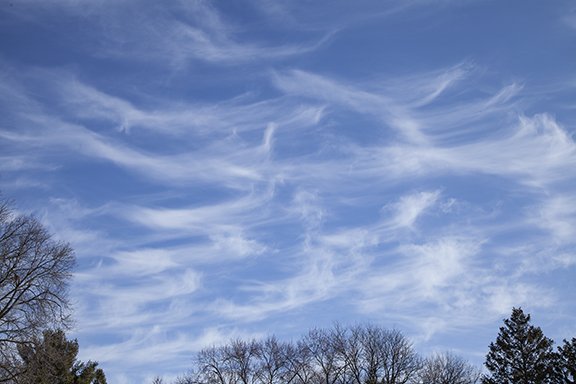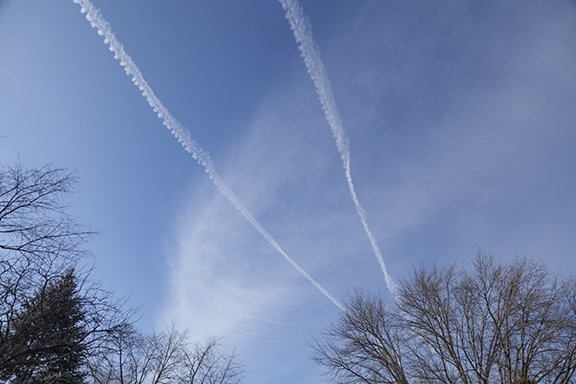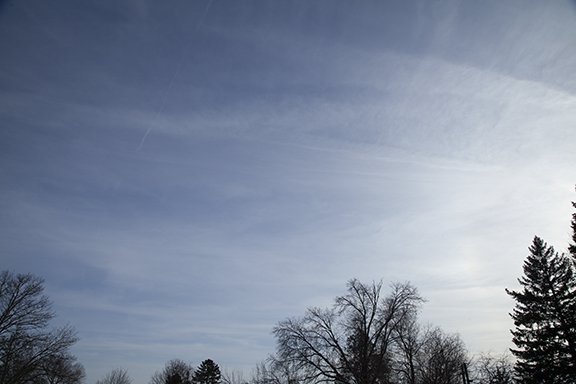Clouds of the Day with Fall Streaks - Friday, April 28, 2023
/Fall Streaks occur when tiny super-cooled water droplets suddenly freeze and begin to fall from their parent cloud. The streaks look like thin strands of hair or wispy filaments. Photos this morning show hair-like fall streaks streaming from the parent cloud of tiny super-cooled droplets. Click on the button below to read an explanation from NESDIS.
Agitation of super-cooled water droplets may also cause them to flash-freeze. Flash freeze is the term for the instant freezing of super-cooled water droplets. Super-cooled droplets are water droplets below the freezing point. Super-cooled droplets occur in air that is void (or nearly void) of particulate matter. Particulate matter encourages condensation - makes it easier for cloud droplets to form than it otherwise would in clean air - which also makes it easier for rain or snow to form.
Morning Cirrus spissatus with fall streaks (looking south)
Close-up of fall streaks overhead
Later in the day: Cloud bases of developing showers approaching from the southwest

























































































